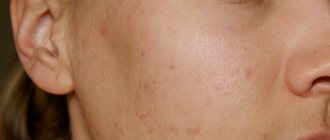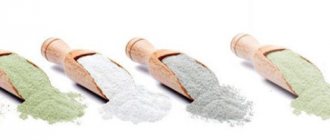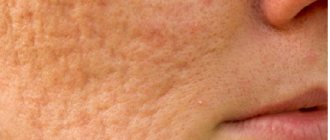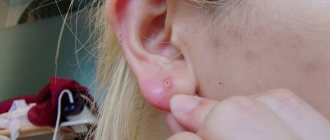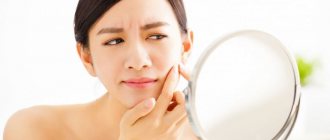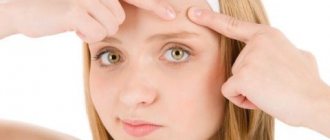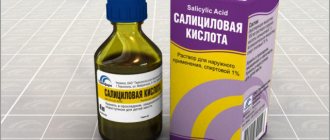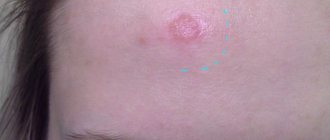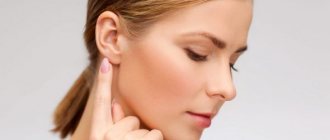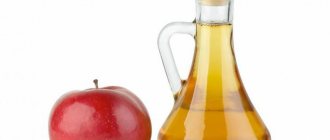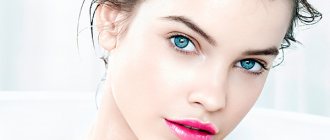What to do if you have a pimple
The first thing that comes to mind for many girls is quickly. However, this is exactly what you should absolutely not do! Especially when the pimple has not yet fully matured. Firstly, this will not be possible - the contents of the pimple simply will not come out, since it is located in the deep layers of the epidermis. Secondly, such manipulations will lead to severe local damage to the skin, which will inevitably result in even greater inflammation, redness of the skin, and damage to it. In addition, this can lead to a cosmetic defect in the form of post-acne (spots), a scar or scar that remains if pimples are squeezed out. Therefore, the first rule is not to push!
The second rule concerns steaming your face. This procedure actually promotes the maturation of inflammatory elements by increasing blood circulation. But you can’t do it for inflamed pimples because there is a risk of spreading the infection throughout the face, thereby only aggravating the situation by causing even more pimples.
You can speed up the maturation of a pimple without the risk of such unpleasant complications.
The remedies are usually applied locally to the inflamed area.
What to put on a pimple after squeezing it
The procedure for popping a pimple is quite simple.
But there is a big risk here. That the wound will get infected. Therefore, before you start squeezing pimples, you should definitely wash your hands with soap and water. It is also necessary to rinse your face and use not just water, but a decoction of chamomile, which not only has antiseptic properties, but also helps heal small wounds. If chamomile decoction is not available, then it can be replaced with a cosmetic product - gel or lotion for washing.
Before you begin the procedure, you should do one more important and mandatory thing - lubricate the pimple with salicylic acid. This will help get rid of dead skin cells that are located in this area.
Apply salicylic acid to the pimple for 2 minutes. And to prevent the skin on your hands from getting burned, it is advisable to wear gloves.
After the pimple is squeezed out, the area should be lubricated with an antiseptic. Again, this could be alcohol, a decoction or infusion of chamomile or calendula. In emergency cases, when there is nothing at hand, you can use perfume.
Then it is recommended to apply ointment to this area to eliminate redness, and one of them will be salicylic-zinc.
Pharmacy products to accelerate the maturation of pimples
To make the pimple ripen faster, you can use pharmaceutical products. In addition to the fact that they contribute to the maturation of the inflammatory element, they can, on the contrary, resolve it. In any case, the pimple will go away without a trace if you don’t try to speed up its release using mechanical pressure with your fingers. So, what tools can be used:
- Birch tar. This product has a specific smell, but it can literally accelerate the maturation of a pimple in one go. The closer to the surface of the skin the inflammation is, the faster it matures. If it does, it may simply dissolve. Treatment with tar is carried out as follows: you need to apply a little tar to a piece of cotton wool and seal the pimple with it. Leave for up to 30 minutes, after which you can repeat the procedure.
- Syntomycin ointment. It also needs to be applied locally to the pimple. There is no need to cover anything. This remedy promotes either faster maturation of inflammation or its resorption. You can repeat it several times a day.
- Hydrogen peroxide. Not the best remedy, since peroxide quietly removes the top layer of skin, depriving it of immunity against infections, etc. But if you need to get rid of it very urgently, which does not want to ripen, you can help it by cauterizing it (for 10 seconds) with hydrogen peroxide, moistening a cotton swab in it.
- Essential oils. It helps a lot. You just need to lubricate the pimple with oil several times a day.
- Sulfuric ointment. This is a very cheap but effective remedy. It is especially effective in cases where you need to draw out the contents of a subcutaneous red pimple. You can apply the ointment several times during the day or at night. The ointment smells of sulfur and has a greasy texture, which is not very convenient to use, but the result is worth it.
- Salt. You need to take sea salt, dilute it with cool water until it has a pasty texture. Apply the paste to pimples. The product perfectly draws out pus.
- Potato compress. You need to grate raw potatoes on a fine grater and apply the pulp to the inflamed element for 1-2 hours. In order for the compress to stick, it is better to secure it to the skin with a bandage and adhesive tape.
- Vishnevsky ointment. This remedy was created specifically to draw out purulent contents from wounds. It is not very convenient to use due to the smell and texture, but the result is good. Like birch tar, Vishnevsky ointment should be dropped onto cotton wool and fixed to the pimple. You can repeat the procedure several times a day.
- Ichthyol ointment. It works on the same principle as Vishnevsky ointment. It must be applied in the same way. Keep on skin for 2 hours.
Many girls use iodine to speed up the maturation of acne. However, this is not the best remedy. On the one hand, it literally burns the pimple, on the other hand, in most cases it leads to a skin burn. Therefore, it is better to choose a more gentle method.
These simple and inexpensive methods help very well to speed up the maturation of a pimple and draw out its contents, thereby reducing inflammation and restoring purity and beauty to the skin. It makes sense to use products to ripen a pimple faster when it appears, causes pain, and is large in size.
How to squeeze it out without consequences?
You can remove pimples that have a white head and are fully mature. You can determine “maturity” by touching it - if the inflammation does not hurt, then the comedone can be squeezed out.
Purulent rashes with demodicosis should not be removed - this will not give a positive result, without appropriate treatment it will only aggravate the course of the disease. It is forbidden to squeeze internal pimples, as this risks spreading a skin infection.
Never squeeze chickenpox rashes. They will go away on their own within a short time, and after squeezing out, scars will remain. Do not squeeze out rashes that have formed on the tattoo during the healing process.
This can cause infection or inflammation from the paint. The answer to the question whether it is possible to squeeze out white pimples on the face depends on the causes of the rash. If they are non-infectious and fully ripe, then following all antiseptic rules, they can be removed.
To avoid a disastrous result, you should use some recommendations:
- Resort to squeezing only if the pimple on the face is single and has a size of up to 5 mm in diameter. This method of cleansing the skin cannot be used if the rash is caused by problems in the body.
- Use sterile cotton wool or a napkin. Treat the wound with a solution of ethyl alcohol or some other antiseptic agent other than iodine.
- If manipulation of the skin causes severe pain, then the pimple has not yet reached the ripening stage. Don't squeeze it out. Why can’t you squeeze pimples in the nasolabial triangle and other areas of the face in this case? Because this can lead to the formation of new inflammations.
- Be sure to ensure that after squeezing out the pus, the ichor comes out. A thick crust will form at the site of the wound, and it will heal quickly.
- Do not squeeze pimples that are located in the nasolabial triangle area. Experts warn that this place is extremely dangerous for such procedures. The fact is that capillaries leading to the brain begin in this area. An unsuccessful procedure can even lead to death. Now it becomes clear why you should not squeeze pimples in the nasolabial triangle.
Tools
So, the extrusion procedure involves the use of some medical devices:
- sterile medical bandages;
- alcohol;
- cotton pads or cotton wool;
- rubber fingertips;
- cotton buds;
- iodine.
How to prepare
Squeezing pimples and blackheads on the face requires some preparation. There is nothing complicated about it.
The main thing is to act strictly according to the instructions and not allow any deviations from the advice that will be given below.
- Trim your nails. But if you have a manicure that you hate to ruin, then be sure to wear gloves before squeezing out a pimple.
- Purchase hydrogen peroxide and alcohol in advance, as well as any antiseptic for facial treatment.
- It is advisable to steam the skin over chamomile decoction. During this procedure, the pores open up, which means it will be easier to remove the pimple.
- Never squeeze pimples in the nasolabial triangle area. Here, capillaries are located very close to the surface, which means the risk of introducing infection into the blood increases several times.
- You should not squeeze an immature pimple. It is easy to distinguish - it does not have a white head, it has a red color, and if you touch it with your fingers it starts to hurt. When such pimples are squeezed out, scars often form, which will then require treatment for a very long time.
The easiest option for relieving redness is a compress with aloe. It's easy to prepare. Squeeze aloe juice from one leaf into a bowl. Dilute halfway with water. Soak a bandage in the solution and apply to the inflamed area for 20 minutes. A cube with frozen chamomile infusion also has a good effect.
Subcutaneous, so-called internal formations are considered especially dangerous. It is difficult to remove them mechanically; in such cases, acne peeling is recommended, carried out in a specialist’s office using special devices and compositions.
You can deal with a subcutaneous pimple on your own, but you need to carry out the procedure very carefully, following all the recommendations of a specialist:
- Remove all remnants of cosmetics, wipe the dermis with an antibacterial drug.
- Carefully examine the pimple - if it has not yet formed, it is better not to touch it for now, and postpone the squeezing procedure for several days. Otherwise, you can not only spread pus through the vessels, but also get an unpleasant bonus in the form of unbearable pain when trying to remove the formation.
- Apply a thick layer of salicylic acid to the pimple and leave for half an hour. The drug disinfects the skin and causes peeling of the upper layers, which will help to easily remove the formation.
- Start squeezing out a hidden pimple, which is done a little differently than with simple acne. Use your fingers to gently stretch the skin in different directions. The purulent formation should gradually come out.
- Continue the process until pus stops appearing; in some cases, blood begins to appear. This indicates that the purulent fluid has been completely removed.
- To prevent the formation of scars, you need to act carefully and slowly, without applying force or making sudden, energetic movements.
- Treat the affected areas of the skin with levomekol or hydrogen peroxide. Leave a cotton swab soaked in the preparation on the areas where subcutaneous pimples are located for 1-3 minutes.
The next day, a thin bloody crust will appear in the places where the subcutaneous formations were located. It is not recommended to remove it or cover it with cosmetics - it will fall off on its own in a few days, leaving clean, smooth skin.
If the procedure is performed incorrectly, a scar may remain at the site of the crust, so such manipulations are recommended only in extreme cases.
How to treat pimples - squeeze them out, come to terms with an unpleasant defect or start treatment - is up to the owner of problem skin to decide.
Of course, some spots will go away on their own after a few months. Some small scars and blemishes can be smoothed out and lightened with proper home care and simple salon treatments.
Such as:
- superficial chemical peels
- depigmenting creams
- absorbable masks
- other products for problem skin care
And even then, all this will be most effective when applied immediately without delay, during the healing process of acne, and not after 2-3 years. And to smooth out serious defects, serious procedures are needed, such as medium chemical peels or laser resurfacing.
And now I’ll tell you a little about these procedures, just so that you understand the seriousness of the consequences of squeezing out pimples. Firstly, such procedures require rehabilitation - it’s not just stopping by a cosmetologist for half an hour for a superficial peeling, and then going on a walk with friends.
After such procedures there will be significant redness, swelling, and then crusts, and you will have to sit at home for several days, caring for the treated area. Secondly, such procedures are relatively painful.
Thirdly, several sessions are usually required 1-2 times a month. That is, for a certain time you will have to sit at home for several days every month, which is not easy to combine with work or study.
Fourthly, such procedures are quite expensive. For example, with laser scar correction, one flash costs about $10, and if you need 10 flashes, it costs $100.
And finally, a course of laser resurfacing or medium peels imposes certain restrictions - you cannot sunbathe, go to the sauna, swimming pool, etc. But even if you are not embarrassed by all the listed costs, the last bad news is that today even radical methods do not provide 100% relief from the manifestations of post-acne.
Why am I telling you all this?
So that when your hands are itching to squeeze out another pimple, you remember that even if you don’t touch the pimple at all, it will go away on its own in a few days. And if you try to roughly get rid of a pimple, the consequences can last for the rest of your life.
When mechanical pressure is applied to the skin layer, damage occurs, which can result in scars and rough scars. These consequences are not easy to treat. Scars also worsen a person’s appearance and contribute to the development of complexes. This factor especially affects the female half of the population.
Blood poisoning
Another frightening consequence of squeezing out even seemingly harmless pimples is blood poisoning. The main reason for this is the unsterile conditions of the procedure and non-compliance with certain rules.
Also, the infection can get through an unhealed pimple wound, which will lead to certain complications. It is especially dangerous to do such procedures in the areas of the nasolabial triangle and on the nose.
It is here that many vessels are located that supply the brain with blood. If the infection penetrates these areas, there is a high probability of developing meningitis.
Remedies for acne inflammation
As soon as a girl notices that she has a pimple, it makes sense to use products aimed at resolving it and relieving inflammation.
Some products are so effective that in 1-3 days they can completely eliminate a pimple, literally erase it from the face. These include the following:
- Salicylic-zinc ointment. It dries out pimples well and helps reduce them. It should be applied locally to inflamed areas several times a day and at night. The ointment has a dense texture, so it does not smear overnight and does not stain clothes. It is quite difficult to wash off in the morning, but very effective.
- Vasoconstrictors. These include, for example, drops “Vizin”, “Naphthyzin”. They are applied locally to the pimple. This method is more of a folk recipe, but it helps many girls.
- Salicylic acid. You can buy salicylic acid at the pharmacy and burn each pimple locally. It is very important to do this carefully and not burn the skin. Otherwise, a bluish stain may remain.
- Essential oils. Tea tree, rosemary are oils that will relieve inflammation and prevent the appearance of post-acne. You can apply it locally to acne or add 1-3 drops to clay masks. Their advantage is that essential oils can be applied under makeup.
- Prednisolone ointment. It perfectly resolves painful subcutaneous pimples. It must be applied strictly locally and provided that there are no more than 3-5 inflamed elements on the skin. This is explained by the fact that this ointment is hormonal. In addition, the skin gets used to it, so this method is best used in extreme cases to ensure a lasting positive effect.
- "Dimexide". This remedy perfectly relieves inflammation. You need to soak a cotton swab in it and press the pimple with it. But you need to be very careful, because Dimexide can leave a burn. To prevent this from happening, firstly, you need to press the pimple for no longer than 10-15 seconds. and secondly, you need to dilute the product in the proportion of 1 part “Dimexide” to 3-5 parts of clean water.
- Cream "Boro-plus", "Boro Acne-relief". These Indian herbal creams not only relieve inflammation. Many cosmetologists prescribe them to their clients after mechanical facial cleansing for faster healing of wounds that remain from manual cleansing. These creams can be applied to the entire face.
- Skin care cosmetics with salicylic acid. Skin cleansers, lotions, tonics, and creams containing salicylic acid help not only relieve inflammation, but also improve the overall health of problem skin. But you need to pay attention that there is no alcohol in the composition.
- Alcohol tinctures. For example, an alcohol tincture of calendula is great for getting rid of pimples. You need to apply it strictly locally to the pimple. Can be repeated 2-3 times a day.
- "Aspirin". Some girls use this unexpected method. You need to crush an Aspirin tablet into powder, dilute it with water to a thick consistency and apply it to pimples.
- Aloe. This is a miracle plant that has no equal in anti-inflammatory properties. You need to cut a small piece from an aloe leaf, cut it lengthwise and stick it to the pimple with the inside. You can make such herbal compresses as many times as you want.
When a person gets a pimple, the logical reaction is to want to get rid of it as quickly as possible. But it’s not always possible to do something.
Most often, the best way is to use special products and wait until the pimple is ripe for it to completely disappear. But there’s just no desire to wait, so people sometimes try to speed up maturation in accessible ways. There are methods that you can resort to without fear of negative effects on the skin and inflammation. But let's go in order.
Subcutaneous acne on the face: causes of formation and risk factors
Problematic skin is not a disease in itself. The formation of such a skin defect is preceded by a combination of problems:
- hyperfunction of the sebaceous glands;
- combining areas of the epidermis - from dry to oily;
- deep crater-shaped pores - as an individual feature of tissue structure;
- genetic predisposition;
- stress;
- hormonal surges;
- slow metabolism;
- poor nutrition;
- accumulation of bacteria and fats;
- exfoliation of dead cells (incomplete) in hair follicles and pores.
Such factors entail degeneration in the structure of the skin, which instantly reacts to internal changes. The most vulnerable in this regard are the large follicles located in the face, chest, shoulders, and upper back.
Skin is an organ that protects a person from the negative effects of the external environment. It also performs the function of heat regulation and protects tissues from UV radiation.
Why do acne appear?
First you need to understand the cause of acne. Rashes appear because the glands produce excessive amounts of sebum. As a result, the excretory ducts of the pores become clogged, which leads to inflammation. But various factors can lead to malfunction of the glands, which include:
- improper nutrition
- problems with internal organs
- incorrectly selected cosmetics
- poor skin care
- stress
There are a number of different types of acne. When they are subcutaneous, there is no purulent head, the rashes are deep under the skin, they look like a ball. This type of pimple should not be touched until it goes away on its own. If it is external, then it has a white head. It should not be touched until it is ripe, but you can speed up its ripening.
Causes of acne
To take the first step towards healthy skin, you should not only find out why you shouldn’t squeeze pimples, but also find out the reasons for their appearance.
Let us highlight the following factors affecting the health of the epidermis:
- Hormonal imbalances. The active work of the sebaceous glands is often caused by an increase in the level of androgens in the blood. As a result of the production of excessive amounts of fatty secretion, pores become clogged and comedones appear. Hormonal imbalance is observed in adolescence, in women during pregnancy, and at the beginning of the menstrual cycle. Therefore, every teenager is faced with the question of why they shouldn’t squeeze pimples on their nose.
- Diseases of the digestive system. Disturbances in the gastrointestinal tract almost always affect the condition of the skin.
- Improper skin care. Cosmetics that are not suitable for your skin type and insufficient cleansing lead to clogged pores and appear in the form of rashes.
- Demodex mite activity.
- Rare change of bed linen.
- Heredity.
- Increased sweating.
- Climatic conditions. Extreme heat or cold and high humidity may be unfavorable for the skin.
- Undergoing drug treatment. Taking oral contraceptives and antibiotics can cause acne.
- Bad habits: alcohol, smoking.
- Unfavorable environmental conditions.
- Weakening of the body's immune system.
- Constant stress, overwork.
If everything is more or less clear with the first two reasons, then the presence of acne in adulthood is most likely associated with a disruption in the functioning of sex hormones. We are talking about a sudden change, for example, in women it can be caused by endocrine diseases, pregnancy, polycystic ovary syndrome, or abortion.
If you rule out health problems and improve your intestinal function, this is not a guarantee of getting rid of acne. Even a healthy person faces an internal dialogue when he sees a pimple on his face, and the question arises about why you can’t squeeze pimples, how to make sure they don’t exist at all.
It is worth paying attention to what surrounds you in everyday life, household items, including the quality of the cosmetics used. What is applied to the face, decorative cosmetics, tools for applying makeup - all this is very important.
A favorable environment for the development of acne in this case is the excessively dense texture of cosmetics. It clogs pores and interferes with the natural functioning of the sebaceous glands.
If you don’t regularly clean your makeup brushes or use the same sponges for a long time to apply foundation, you can spread harmful microorganisms all over your face.
The influence of a hot climate on the formation of acne is explained by the fact that high humidity stimulates sweating and promotes the development of harmful bacteria and microorganisms. When visiting a country with a very warm climate, or in the summer, it is advisable not to be in the sun during peak hours.
How to determine maturation?
There are a number of signs that help you understand that a pimple is ripe and therefore ready for further treatment. As an example - to extrusion. After all, if you squeeze out or otherwise remove an immature rash, then scars and scars may appear in the future.
You need to pay attention to the full formation of the white head. This suggests that the fat and pus have reached the surface layer of the skin, the exit. You also need to pay attention to whether the redness and inflammation have gone away. If not, then you can’t touch the pimple yet; you can only touch a ripe pimple. In this case, we will use means for accelerated maturation.
Pharmacy products
The easiest way to speed up ripening is with the help of numerous products that are freely sold in any pharmacy. These include the following things:
- Essential oils
They come in different varieties, you can choose them to suit your taste. Tea tree oil is especially suitable, which should be applied to the problem area a couple of times a day.
- Hydrogen peroxide
This product has contraindications because it removes the top layer of skin, making it vulnerable to infections. But if pace is what matters, few things compare.
- Syntomycin ointment
Apply separately to each pimple a couple of times a day. After a series of treatments, the pimples will resolve or mature enough to be removed in a manner that is convenient for you.
- Birch tar
The disadvantage of this product is its specific smell, which many find significantly unpleasant. But this is compensated by high effectiveness, which extends even to acne in the deep layers of the skin.
- Sulfuric ointment
This is an effective, but at the same time cheap remedy that copes even with deep subcutaneous acne. You need to apply it at night. The disadvantages include an unpleasant odor and an uncomfortable liquid texture.
- Dimexide
A popular remedy that is good for relieving inflammation. It must be applied carefully, only pointwise, to prevent burns.
- Cream "Boro-plus" and its variations
This cream relieves inflammation well, faster than many other products. But at the same time, it is safe. It is based on natural ingredients and promotes faster healing of wounds, if any arise after acne removal. Many cosmetologists recommend this cream to their clients.
- Tonics and lotions
Typically, toners and lotions that are suitable in this situation are based on salicylic acid. As a result, they not only relieve inflammation, but also contribute to the overall improvement of the skin. Please note that such products should not contain alcohol, otherwise they will be less good.
- Aspirin
You can do this: crush it into powder, dilute it with water to make a paste and then apply it to the rashes so that they speed up their maturation.
Medicines for treatment
In order to simultaneously eliminate redness after squeezing and get rid of rashes, salicylates, retinoids, and antiseptics are used.
Differin
A retinoid available in gel and cream forms. Used as monotherapy or in combination with other agents. Application of the drug requires compliance with the dose, since an excessive amount can cause a backlash from the skin in the form of redness and peeling.
Differin prevents the proliferation of pathological microflora, which helps prevent the worsening of the process, accelerate the cleansing of the skin from rashes and prevent the development of scars at the site of the pimple.
Salicylic acid
A well-known representative of salicylates. It can be used in its pure form for application to areas of hyperemia, or can be used as an ingredient in masks. Salicylic acid stops inflammation processes and dries out pathological elements.
Vishnevsky ointment
It will be effective in cases where squeezing the pimple has led to the formation of an internal abscess or significant tumor. In this case, the ointment is applied to the area of inflammation in the form of an application and fixed with an adhesive plaster. It is advisable to carry out the procedure at night so that the drug is in contact with the pimple for a long time. The purulent contents will come to the surface, and the swelling will decrease significantly.
Tincture of calendula
To relieve swelling and redness around the pimple, apply the tincture to a cotton pad and apply it to the hyperemic area for a few minutes. This procedure is repeated three times a day. By the end of the first day, the skin condition will improve.
Iodine
Point cauterization with an antiseptic is an old proven method. The drug will eliminate inflammation processes by stopping the growth and reproduction of microorganisms.
It is important not to burn or dry out the skin. In between processing the tincture, you can use a nourishing or antibacterial cream.
Chlorhexidine
A powerful antiseptic that is used to relieve inflammation and prevent new rashes. The good thing about the drug is that it has a wide spectrum of action and fights not only bacteria, but also viruses and fungal infections.
Folk remedies
There are even simpler remedies, but they are no less effective at treating pimple maturation. These include, but are not limited to:
Although regular salt will also be appropriate, it is better to give preference to sea salt. It needs to be diluted with water until it turns into a paste. After this, you need to apply it to the pimples, leaving it for some time. Thanks to its properties, salt perfectly draws out pus.
- Potato
Take raw potatoes and finely grate them. A cool paste comes out and is applied to the inflamed area for a couple of hours. The easiest way is to wrap it with a bandage. It comes off after a couple of hours. Repeats several times.
This is not the best remedy for acne maturation. It acts quickly, but can only lead to skin burns. If you want something similar, but more gentle, then you should give preference to brilliant green. It is more difficult to wash off, but you will not damage the skin.
- Alcohol tinctures
Although it was previously mentioned that alcohol-based toners can be harmful, tinctures that are applied on the spot may be suitable due to the alcohol. One of the most popular options to speed up ripening is an alcohol tincture of calendula. For it to work, it is applied strictly locally to the pimple two/three times a day.
It is enough to cut off a piece of aloe, cut it and apply it to the problem area. The more often such a compress is done, the better its effect will be. There are no contraindications to this approach.
Remember that it is not enough to just fight the external manifestations of acne. Most often, the real problem is somewhere inside, so sometimes it’s better to start fighting the root cause of the rash. Then, gradually, without additional intervention, the acne will recede and will no longer bother you.
Acne appears not only in adolescents during the period of age-related hormonal changes, but also in adults as a consequence of various diseases, changes in hormonal levels or a constant depressed state. Due to the increased activity of the sebaceous glands, inflammation appears on the skin - acne. The immune system, in turn, fights inflammation, but pus collects under the skin in the follicles, which can cause infection. The appearance of acne on the skin of the face can signal the presence of a number of diseases in a person. A pimple is also a cosmetic defect.
So, what can you put on a pimple to make it go away faster? You can speed up ripening with pharmaceuticals, which are freely sold in all pharmacies.
These can be essential oils, hydrogen peroxide, sulfur ointment, tonics and lotions with salicylic acid and much more. There are also many folk remedies and methods to accelerate the maturation of acne.
After squeezing, a tumor appeared
What to apply to a squeezed pimple if swelling suddenly develops? Edema can develop for two reasons. In the first case, this is increased sensitivity of the skin. That is, even simple pressure on the skin can cause such a reaction. This happens due to an abundant flow of blood.
A cold compress or smearing with mint toothpaste will help to cope with this.
The same can happen when the inflammatory process begins to develop. If, in addition, the swelling is accompanied by pain, muscle spasms, and there is also an elevated body temperature, you should immediately consult a doctor.
If the swelling is not accompanied by the symptoms listed above, then you can use one of the following methods:
- An iodine mesh at the site of edema, which is quickly absorbed and in some cases helps to overcome the phenomenon we are describing.
- Soda compress. To do this, mix water and soda in an exact ratio of 10 to 1. Soak a cotton pad in this solution and apply it to the site of swelling for several hours.
- Aloe juice. This juice helps to quickly cope with a variety of skin problems, and it is also an excellent antiseptic.
Pharmacological drugs
In pharmacies you can find many medications for acne on the face. Contacting a specialist (dermatologist) will help you choose a remedy based on the specific case and diagnosis. Drugs of this kind include:
- Birch tar is good at drawing out the purulent contents of a pimple. A cotton swab with a small amount of product should be applied to the inflamed area for 20-30 minutes. Acne should go away with the first use. If the result is negative, the procedure must be repeated. Before smearing pimples, you need to treat your hands and face with an antiseptic.
- Ichthyol ointment and Vishnevsky ointment also accelerate the maturation of pimples. Cotton wool soaked in ointment must be applied to the pimple for two hours. The lack of drugs is expressed in an unpleasant odor, but this method is the most effective.
- Sulfur ointment is an effective remedy for removing pus from an inflamed area of skin. To make the pimple ripen faster, you need to smear it several times during the day, as well as at night before going to bed. Hands and face must be treated with antiseptic before applying ointment to the pimple.
- Redness of the facial skin is well relieved by cosmetics based on salicylic acid. The most effective remedies are tonics and lotions without alcohol. You can also use the acid itself, but you should be very careful not to cause burns to the skin.
- Applying a mixture of aspirin powder and a drop of water is also an effective remedy.
- Vasoconstrictors (nasal, eye drops) also relieve inflammation well. Drops should be applied directly to the reddened area of facial skin.
- Hormonal drugs help resolve subcutaneous inflammation. Doctors do not prescribe this drug because of the addictive side effect. They can be applied to acne only once and in small quantities.
- Redness on the face will go away if you use masks based on or with the addition of essential oils.
Other acne treatments
Why do pimples crush?
Causes of inflammation: poor diet, hormonal imbalances, poor-quality cosmetics, lack of hygiene, oily skin, endocrine system disorders, diseases of internal organs, genetic predisposition.
You can squeeze out white pimples that are fully mature. You can understand this by pressing on it. If it doesn't hurt, then press on. Do not squeeze internal pimples, as the pus is unlikely to come out. It will only spread inside and start an infection, which will cause even more pimples.
To squeeze out a pimple without consequences, wash your face and hands thoroughly. After squeezing, treat the wound with an antiseptic. Never squeeze pimples on the nasolabial triangle, even if they are ripe. Don't squeeze pimples if there are a lot of them on your face. It won't help. This problem needs to be resolved with a doctor.
It is best to do cosmetic cleaning at home instead of squeezing. Types of cleaning: mechanical, vacuum, ultrasonic, chemical. Read more about squeezing pimples below.
During adolescence (up to 14 years) and simply with problematic facial skin, pimples, blackheads and comedones (purulent wounds) periodically appear on the epidermis. These formations represent a clogged pore, which due to the large amount of sebum, dirt and oil begins to become inflamed.
Next, a specific area is infected. At the site of the injury, redness, itching, inflammation appears, and pus begins to actively secrete. After this, the process enters the active stage, when abscess formations penetrate deep into the skin.
Depending on your immunity, the condition of your face, and your lifestyle, the process of cleansing pus lasts from one day to a week. It is during this period that we begin to crush ripened pimples.
It is dangerous to injure the skin:
- in the area of the nasolabial triangle;
- near the eyes;
- on the temples.
The face is equipped with many blood and lymphatic vessels. Penetration of infection into the blood can lead to sepsis and inflammation of the brain. Infection of the lymphatic system threatens the human body with decreased immunity and impaired metabolic processes.
Squeezing out blackheads damages the walls of small blood vessels. The infection enters the blood. If a person has a severely weakened immune system, germs can spread to the venous sinuses (located near the lining of the brain) and cause meningitis or sinus thrombosis.
Squeezing pimples containing pus is especially dangerous. As long as the purulent contents are limited to a dense capsule (it is formed from connective tissue), the risk of blood poisoning is minimal.
Doctors' opinion
Dermatologists, speaking about the possibility of squeezing out pimples, especially at home, definitely recommend abandoning this method of dealing with rashes. Firstly, a rash can be a secondary symptom of a disease: eliminating one pimple is not a cure, they will appear again.
Secondly, it is quite problematic to carry out this procedure at home and not introduce an infection into the pimple, which will aggravate the situation.
The most important thing is the danger of infections, which, if they enter the body through a squeezed pimple, will not only lead to the appearance of a new rash, but can also cause serious illness.
Among the most dangerous infections that can be introduced into the body through squeezed pimples is staphylococcus, and there is a possibility of developing meningitis and encephalitis.
In addition, it must be remembered that with mechanical impact on the abscess, its contents can not only come out, but also, on the contrary, get into the tissue, which will lead to inflammation. In this case, a permanent seal will probably form at the site of the pimple, which is no longer so easy to get rid of.
Modern cosmetologists also do not recommend squeezing out pimples on your own, but allow the possibility of a professional procedure - facial cleansing. In a specialized office, using professional equipment and disinfectants, the risk of infection is indeed reduced.
However, there are several types of cleanings available on the service market, which differ in their level of effectiveness and degree of safety.
- Mechanical cleaning. This type is considered one of the most effective, but its safety depends on the specific salon and the responsibility of the cosmetologist. During mechanical cleaning, pimples are squeezed out manually, as well as using a cosmetic loop and a Vidal needle. Ideally, the specialist should use disposable gloves and sterile wipes, and the loop and needle must be disinfected and not just rinsed. The skin must first be steamed, and after the procedure, soothing agents must be applied to the skin.
- Vacuum cleaning. To carry it out, special equipment is used with a nozzle in which air is pumped under negative pressure - thus the contents of the pimple are sucked out.
- Ultrasonic cleaning. Unlike the previous ones, ultrasonic cleansing only affects the superficial layers of the skin, so it may not be effective in combating large acne. Disincrustants - special acid-based cosmetics - are first applied to the skin. Their goal is to disrupt the structure of pimples, which are then cleared under the influence of an ultrasonic device that causes high-frequency vibrations.
- Dry cleaning. This type of cleansing is carried out with minimal physical impact on the skin. Products containing either acids or enzymes are applied to the face. Both types of drugs cleanse the surface layers of the skin and help tighten pores.
Despite the popularity of various types of cleansing, all procedures have a number of side effects. General contraindications for all are herpes, diabetes, asthma, eczema, severe stages of hypertension, and epilepsy.
Mechanical and vacuum cleaning cause serious damage to the skin; crusts often form at the sites of squeezed pimples, rosacea and small bruises may appear. It usually takes at least three days for the skin to recover.
Chemical and ultrasonic cleansing do not guarantee a good result in the fight against large and “deep” pimples; in addition, chemicals can cause an allergic reaction on the skin.
Folk remedies
As you know, treatment with herbs and other natural remedies has a long history. People have many recipes passed down from generation to generation. Such products can be found in every home. They cope with the task no worse than pharmaceutical drugs. What can I do to make acne go away faster?
- Salt.
Add a little water to a small amount of salt (a teaspoon) and stir until a thick porridge forms. Apply this solution to acne on the face. Let it sit for a while (the solution will dry and fall off). The salt will draw out the pus from the skin pores. It is recommended to use sea salt; if this is not available, you can use table salt.
- Potato.
Raw potatoes need to be peeled and finely grated. You should end up with raw mashed potatoes. The mixture should be applied to the inflamed parts of the face. The mask stays on the face for a couple of hours. For convenience, you can secure the compress with a bandage. The effect should appear after several procedures.
- Aloe.
It is necessary to cut a piece of about 2x2 cm from an aloe leaf, cut it lengthwise and apply it to the pimple. This method has no contraindications, so it can be used very often. Once the attached piece of plant has dried, you can replace it with a new one. You need to replace it as often as possible so that the pimple matures faster. You can make a face mask from a mixture of aloe and tea tree essential oil. It is necessary to squeeze out aloe juice, add two drops of essential oil, mix and apply to inflamed areas of the face. The mask must be washed off after 25-30 minutes.
- Alcohol tinctures.
Calendula tincture is applied to the damaged area of the face two to three times a day. The alcohol in the tincture enhances the effect of the herbal extract. However, if alcohol is contained in a lotion or tonic, this will cancel the effect of these products. Moreover, alcohol-containing cosmetics can damage inflamed skin. Such products should be used with caution.
When using iodine as a remedy for acne, you need to be extremely careful. It is contraindicated to apply undiluted iodine to inflamed areas of the face. This can lead to burns and scars. The consistency must be selected according to the characteristics of the skin. If it is not possible to find an iodine solution, it is better to use brilliant green.
A not very popular, but very effective method to speed up the maturation of pimples is to apply fried onions to the pimple. The onion should be cut into cubes and lightly fried in a frying pan without oil. You need to apply the product directly to the inflammation or make a compress from gauze. This helps draw pus to the surface of the skin. Instead of onions, you can use white cabbage.
Other acne treatments
Prevention
To remove an internal pimple on the face and under the skin on the body forever, it is important to follow preventive measures. For some, they will become the ABC of beauty for life, especially if the person is allergic or has skin conditions.
IMPORTANT! Prevention is especially important for people with too oily and too dry skin.
To prevent acne formation, doctors recommend:
- Cleanse your face regularly, and it is best to wash it with plain water and add a few drops of lemon juice. This component will help narrow pores and act as a disinfectant.
- Adjust your diet - for many people, the reason for the appearance of subcutaneous acne lies precisely in poor nutrition. There are foods that provoke an increase in fat in the body, which also affects the skin. If your skin is too oily, acne occurs, so your diet should be as healthy as possible, without a lot of sweet and fatty foods.
- Inspection of cosmetic products is an important detail for every person. Patients with a tendency to allergies cannot tolerate cheap, low-quality cosmetics, which can be the cause of blockage of the sebaceous glands. Therefore, when using decorative cosmetics, it is necessary to choose high-quality brands, and when acne appears, you should not apply any products to the skin at all, so as not to increase irritation.
- Patients with sensitive skin need to purchase clothes made from natural fabrics - they are less irritating to the skin, promote normal thermoregulation, and prevent sweating.
- Exercising will promote the best possible blood circulation, increase immunity, and stress resistance, so doctors advise patients with frequent subcutaneous acne to add physical activity to their lives.
Proven methods
There are a lot of tips and recommendations online from various forums, where users advise what to put on a pimple to make it go away faster. Many repeat well-known methods, and some offer modified (improved) variations. The main thing is that all these methods showed good results. Here are some of them:
- In addition to the above procedure with salt, another method is proposed with the addition of laundry soap. A solution of these components must be applied to the face for 10 minutes.
- Instead of salt porridge, it is suggested to apply a compress of concentrated saline solution.
- Recipe from a mixture of aspirin, hydrogen peroxide, baker's yeast. It is recommended to apply a mixture of these ingredients on the pimple and leave it on for 20 minutes.
- Toothpaste will help, if necessary, quickly hide inflammation on the skin of the face. The menthol in the paste will soothe the skin and relieve inflammation, making it less noticeable.
- If you urgently need an instant effect, you can cauterize the pimple with hydrogen peroxide. However, this is a temporary measure and the main cause of inflammation will not go away. In addition, there is a high risk of skin burns and unnecessary scars. You need to be careful when using and not use too often.
If, when pressing, the pimple does not have a stem, it means that the contents have not yet dried and are viscous; when squeezed, it may partially remain under the skin. This will lead to re-inflammation of the skin pores. Before squeezing it out, you need to make a hole at the tip of the pimple with a previously disinfected needle. After the procedure, you need to treat the wound with an antiseptic to avoid infection and rapid healing without complications.
After a couple of hours, the inflammation and redness from the former location of the pimple should go away. If this does not happen, you can soothe your facial skin with herbal compresses (chamomile, celandine) at night. Relapse will not occur if you follow a diet that does not stimulate the sebaceous glands.
Accelerating the process of maturation of an inflamed pimple is not such a difficult task. To solve it, warming and anti-inflammatory medications are used to accelerate blood flow in the area of the epidermis that has been affected by acne. As a result of this, all processes inside the pimple are accelerated and maturation occurs 2-3 times faster than it would be naturally. Accelerating the metabolism inside the inflamed acne is necessary so that the cycle of the formation of the pimple stem and its disintegration occurs as quickly as possible. In this case, there is no need to squeeze out acne or use strong antibacterial ointments to remove them. In addition to pharmaceutical drugs, you can also use traditional medicine in the form of warming compresses.
Symptoms
The main external symptom is redness of the inflamed area of the skin. There are a lot of bacteria on the surface of the epidermis, which immediately accumulate on the affected area of the skin. Thus, pustules form under the skin.
The advanced stage of the disease looks like lumpy, greasy, red skin. Treatment at this stage is quite difficult.
Due to prolonged ripening, a person feels uncomfortable, for example, if the pimple is on the shoulder blade. It is painful to touch and constantly itches.
Pimples often appear in groups on the face. In this case, you need to seek help from a dermatologist. He will find out the reason for their formation and prescribe the necessary treatment.
Is it possible to speed up the maturation of a pimple?
Of course, you can make this process faster. Moreover, dermatologists recommend using this method of therapy so that the purulent contents of the neoplasm come out naturally after several procedures for treating inflamed acne. For this, it is allowed to use both and traditional medicine recipes that ensure rapid maturation of the inflamed area of skin.
Some people who practice accelerated acne maturation are often tempted to squeeze out the contents of the acne as the acne becomes soft and the pimple's contents are ready to burst and come out. This cannot be done, since the acne must ripen on its own, the pus and ichor located inside it will come out at the moment when there is time for this from the point of view. Any premature impact on a pimple threatens the introduction of a secondary infection, extensive inflammation and the formation of even more acne.
How and what to do to make a pimple ripen faster?
In order for the pimple to mature, it is necessary to perform simple therapeutic actions as quickly as possible and follow the instructions for the medications used. These manipulations are carried out at home, or on an outpatient basis through periodic visits to a medical facility for and parallel observation of the dynamics of the development of the clinical picture. Let us consider in more detail all the methods of accelerated treatment of acne and methods of stimulating the process of its maturation.
What to spread?
For external treatment of the inflamed area of skin, medicinal ointments and gels are used. The following external-spectrum medications are considered the most effective:
- Tetracycline ointment;
- Salicylic-zinc paste or ointment made on the same basis;
- Erythromycin ointment;
- Akriderm (available in the form of gel and ointment).
All these medications accelerate blood circulation at the site of acne and simultaneously have an anti-inflammatory, antibacterial and warming effect. As a result, the ripening process is accelerated several times, and the pathogenic microflora located inside the pimple is suppressed by the antiseptic components included in the ointments. After completing the final stage of maturation, the acne simply dries up, and its surface part turns into a dry crust, which is easily separated from the general epidermis.
Thanks to this, a person gets rid of an inflammatory neoplasm on the body and does not worry that acne will leave unpleasant traces in the form of scars, since their occurrence is impossible due to rapid maturation and the absence of an extensive purulent-inflammatory process.
How to cauterize it to make it go away?
Cauterization of acne is another method of combating this kind of inflammatory formations on the skin. Of course, it is not able to ensure accelerated maturation of acne, but is aimed exclusively at getting rid of the dermatological problem in the shortest possible time. To do this, you need to use the following types of medicines:
Other methods
Alternative methods for accelerating the process of acne maturation, regardless of their location, are traditional medicine recipes. They are based on the use of completely natural ingredients that were created by nature itself. They look like this:
- Chamomile baths. To prepare them, you need to take 30 grams of dry chamomile, add 2 liters of cold water and simmer over low heat for 30 minutes. After this, the broth is poured into a bowl, where as it cools it becomes ready for use. Once the home remedy reaches room temperature, soak a clean waffle towel in it and apply it to the acne-affected areas of the skin. As soon as the towel has cooled, it must be soaked again in warm water and the procedure must be repeated until the broth has cooled completely. This is a kind of warm compress, the therapeutic effect of which is achieved not only due to the warmth of the healing decoction, but also due to the anti-inflammatory properties of chamomile.
- Dry heat. To speed up the process of acne maturation, she also uses this simple folk method of alternative medicine. It consists of pouring the required amount of table salt into an ordinary cotton scarf, after which the scarf is tied with a cord. The salt in it is heated in a dry frying pan, and then a warm handkerchief is placed against the pimples being treated. Warming with warm salt is performed daily, and one procedure lasts at least 15-20 minutes.
- Aloe pulp. Preparing this medicine will not take too much time, it is easy to use and absolutely accessible to most citizens. You will need to pick one leaf of the medicinal Aloe flower, wash it thoroughly under running water, and then pass it through a meat grinder. The resulting pulp is placed in a thick gauze bandage, which must be sterile, and then it is applied to the pimples in the form of a compress.
You should use lotions made from aloe pulp at home, when you have enough time to devote to the health of your skin. A person should stay with such a compress for at least 2 hours every day. The approximate treatment period is 5 days. During this time, Aloe juice will relieve inflammation, and its active components will draw out all the purulent liquid that has accumulated under the skin. After this, the pimple dries up and no trace remains of its presence.
